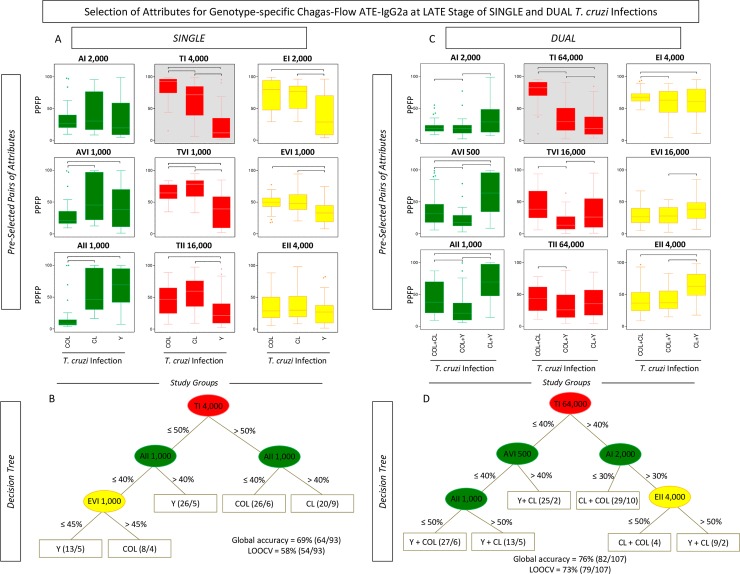Fig 7. Selection of attributes for genotype-specific Chagas-Flow ATE-IgG2a at late stage of single and dual T. cruzi infections.
(A) Comparative analysis of IgG2a reactivity at late stage of single infection with distinct T. cruzi genotypes (TcI/COL, n = 29; TcVI/CL, n = 29 and TcII/Y, n = 35) using pre-selected pairs of attributes, including: AI 2,000; AVI 1,000; AII 1,000; TI 4,000; TVI 1,000; TII 16,000; EI 2,000; EVI 1,000 and EII 4,000. (B) Comparative analysis of IgG2a reactivity at late stage of dual infection with distinct T. cruzi genotypes (TcI/COL+TcVI/CL, n = 28; TcVI/CL+TcII/Y, n = 43 and TcI/COL+TcII/Y, n = 36) using pre-selected pairs of attributes, including: AI 2,000; AVI 500; AII 1,000; TI 64,000; TVI 16,000; TII 64,000; EI 4,000; EVI 16,000 and EII 4,000. The results are expressed as median PPFP values in box plot format with the outliers showed by shaded dots. Comparative analyses were performed by the Kruskal-Wallis/Dunn’s post test. Significant differences were considered at p<0.05 and highlighted by connecting lines. The light gray background highlights the pairs of attributes (“target antigen and serum dilution”) with the higher performance for the genotype-specific diagnosis at late stage of single and dual T. cruzi infections. Decision trees were constructed using the sets of attributes (“target-antigen and serum dilution/cut-off”) to create algorithms (root and branches) to classify at late stage, individual samples from (C) single and (D) dual T. cruzi infections. Global accuracy and leave-one-out-cross-validation-LOOCV are provided in the Figure.

